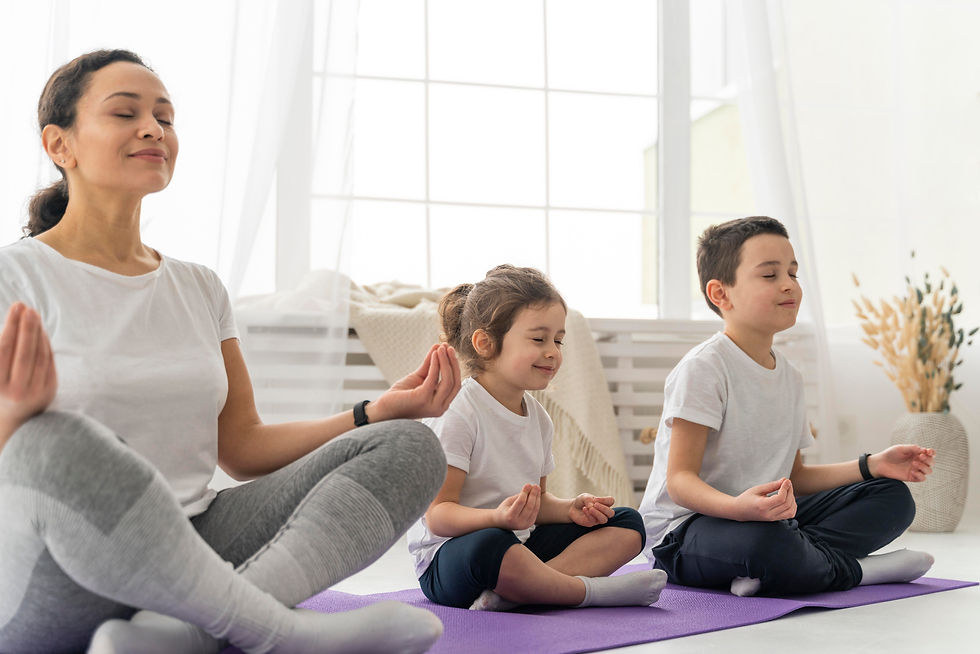How yoga & movement can help manage anxiety in children
- Ansham Kaushal
- Aug 23
- 2 min read
Updated: Sep 8

Childhood anxiety is more common today than ever before. With school pressure, digital distractions, and everyday stress, many kids struggle to stay calm and focused. As parents, it’s natural to worry, but the good news is, there are natural ways to help. One simple yet powerful tool is yoga and mindful movement.
Why anxiety affects kids
Children often don’t know how to express stress or worry. Anxiety can show up as:
Trouble sleeping
Irritability or mood swings
Lack of concentration in studies
Stomach aches or headaches without a clear reason
If not managed early, this anxiety can affect a child’s overall growth and confidence.
How yoga helps manage anxiety
Yoga isn’t just about stretching; it teaches children to connect mind and body. When practiced regularly, yoga can:
Calm the mind: Breathing techniques reduce stress and slow racing thoughts.
Improve focus: Simple poses help kids pay attention and feel grounded.
Boost mood: Movement releases “happy hormones” that fight anxiety.
Build resilience: Yoga teaches patience, discipline, and self-awareness.
Simple yoga & movement ideas for kids
You don’t need a yoga studio just a quiet space at home. Here are some easy practices:
1. Deep Breathing (Balloon Breath)
Ask your child to place their hands on their tummy and imagine blowing up a balloon with each breath. This helps release tension.
2. Tree Pose
Standing on one leg with hands together helps children build balance and concentration.
3. Butterfly Pose
Sitting with feet together and knees moving like wings helps relax muscles and reduce restlessness.
4. Mindful Walk
Encourage kids to walk slowly, noticing how their feet touch the ground. A simple way to stay present.
5. Dance & Free Movement
Sometimes, letting children move freely to music can be more therapeutic than structured yoga.
Tips for parents
Keep sessions short (5–10 minutes) to start.
Practice with your child they learn best by copying.
Make it playful, not strict. Pretend poses are animals or fun objects.
Use calming background music to create a relaxed mood.
Beyond yoga: A holistic approach
While yoga and movement are great tools, children also need:
A balanced diet with enough fruits and vegetables.
Good sleep routines.
Reduced screen time.
Open conversations about their feelings.
Conclusion
Anxiety in children is real, but it doesn’t always need medication. Yoga and mindful movement provide a natural, simple way to help kids manage stress, build confidence, and feel more in control of their emotions. Just a few minutes a day can make a big difference in your child’s mental well-being.
Disclaimer: This blog is for informational purposes only and is not medical advice. Seht helps families stay informed but is not a substitute for professional healthcare guidance.
Download the mobile app:





Comments